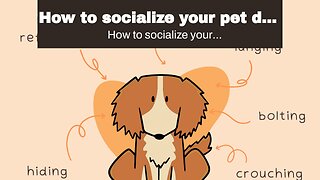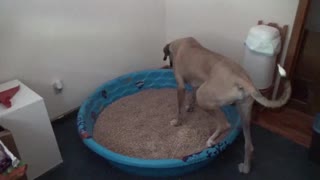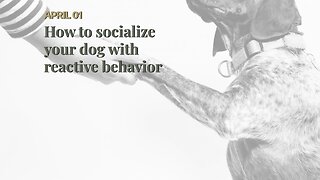Happy Dog Dancing With Owner Singing Funny Video
Are your dogs respond to you like the one in this video or giving you deaf ears? If your dog(s) responds to you in a positive way, avoid repeating the command over and over and imposing yourself until you get a response; instead, take a step back and consider the following scenarios which are some of the most common issues encountered when training dogs.
1) Low Value Treats: Are Your Treats Worth Working For?
It’s a romantic and hard to debunk myth that dogs work for us just to please us. In reality, as opportunistic beings, dogs are most likely thinking “what’s in it for me?” according to the Association of Pet Dog Trainers (APDT). The right use of treats can really make the difference between a dog who is eager to work and one who couldn’t care less. The use of low-value treats (such as kibble) can be detrimental if your dog isn’t excited by them, especially during the initial stages of learning or when there are distractions around, so make sure your treats are worthy of attention.
Also remember to stick to treats which are soft, smelly, and in small bite-sized pieces. This allows your dog to quickly gobble up the reward and focus his attention back on you, rather than being distracted by a longer-lasting treat.
A suggestion? Try to use what respected veterinarian, trainer and writer Dr. Ian Dunbar calls the Ferrari of dog treats: Freeze-dried liver.
2) Low Rate of Reinforcement: Are You Missing Out on Rewarding?
In the initial stages of learning or when there are lots of distractions around, your dog may find sniffing the grass, looking around, marking territory and pulling on the leash more rewarding than training. Why is that? It’s probably because there are stimuli that are extra interesting and are worth paying more attention to. If your dog has received little training in the past, he may have been doing this for a good part of his life. Increasing the rate of reinforcement during this time by giving your dog more treats for his training efforts may help to motivate him, and will teach him to pay more attention to you than to the distracting environmental stimuli.
A low rate of reinforcement can also cause your dog to get frustrated and give up trying; remember, during the initial stages of learning you need a continuous rate of reinforcement (giving rewards for every success), and only once your dog shows signs of responding well can you move on to a variable schedule (only giving treats for success every now and then).
3) High Criteria: Are You Asking Too Much at Once?
This is where the saying “be a splitter and not a lumper” comes into play. It is often tempting to try to teach new behaviors all at once in a single evening. When your dog stops working for you, you start thinking: “Am I asking for too much at once?” Truth is, often when dogs fail to respond to a command it is because it is too hard for them. So try not to ramp up the difficulty too quickly; rather, break the objective down into several attainable steps to help your dog succeed. As an example, if you were trying to train your dog to touch the tip of a target stick with his nose, you could reward him for touching ANY part of the stick at first. Over time once your dog gets a hang of this, you could then move on to rewarding him only for touching the rounded tip at the top of the stick.
Try your best to prevent your dog’s progress from stalling, and do not make your training sessions too long – keep them short and sweet!
If you want to know more, check this one of the best course to train your dog online now: https://bit.ly/3qkZluV
"Happy Dog by You Tubee is licensed under the Creative Commons Attribution License. Based on a work at https://www.youtube.com/watch?v=JHN701ya9fA ."
-
 1:27
1:27
codefilms
5 years ago $280.88 earnedExcited Dogs Can't Contain Happiness After Doggy Daycare
725K9 -
 6:45
6:45
Dog Lifestyles
3 years agoIs Your Dog Happy Or Sad? Top 10 Signs Your Dog Is Happy With You!
40 -
 5:00
5:00
GuillermoChaves
1 year agoHow to socialize your pet dog with reactive behavior
33 -
 0:29
0:29
Dogacat
6 years agoCute dog begs to be stroked!
25 -
 0:36
0:36
john1711
3 years agoCute puppies and Funny playing | Funny Catty Dog | Dog Training
7 -
 1:00
1:00
MB Entertainment Show
3 years ago $0.20 earnedCute Dog Reaction ~ Meeting With Family 2021
169 -
 2:17
2:17
wtp1776
2 years agoIndoor Dog Litter Video
110 -
 5:03
5:03
GuillermoChaves
1 year agoHow to socialize your dog with reactive behavior
39 -
 0:29
0:29
KnikRiverLodge
4 years ago $23.71 earnedBewildered Dog Gives Hilarious Look To The Camera
272K3 -
 0:31
0:31
kwoodruff
5 years ago $10.59 earnedHowling Dog Makes Baby Girl Happy After Walking Into Room
8.93K